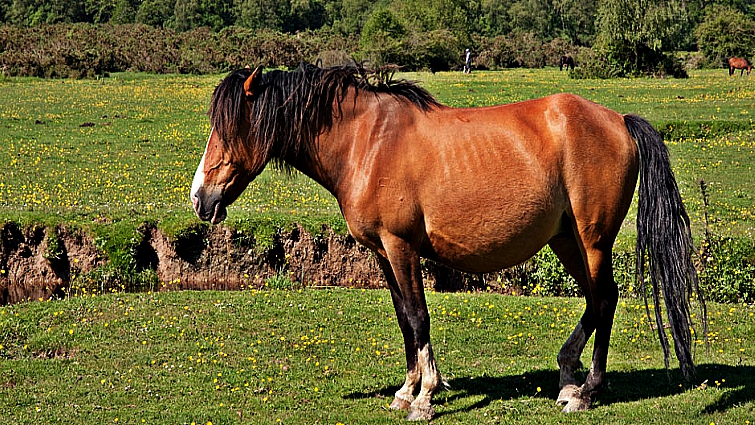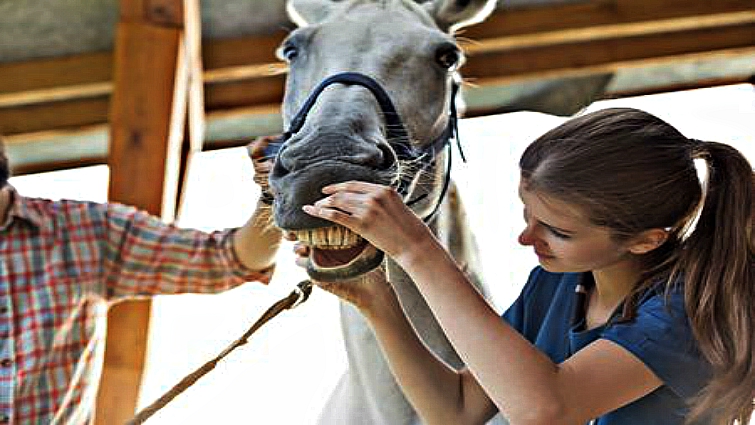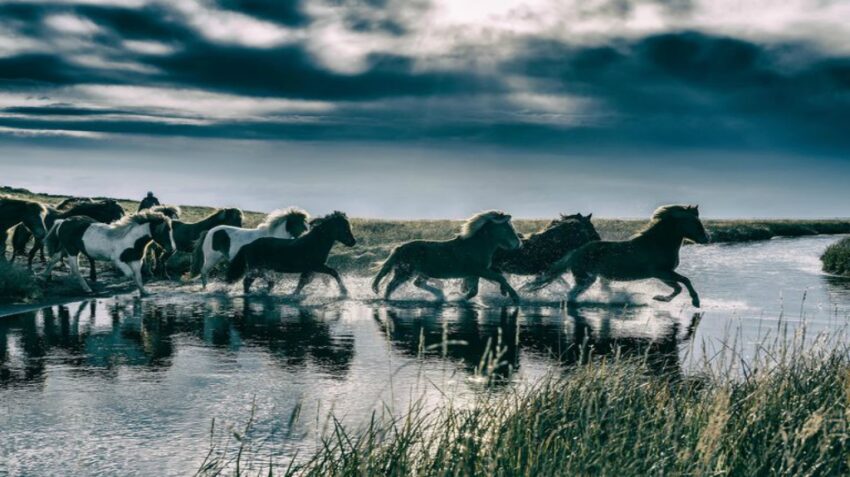1) Horses Sleep Standing Up. Yes, horses do sleep standing up! They sleep laying down too, but only for short times. Learn all about the sleeping habits of horses.
2) Horses Can’t Burp. That’s right! Horses can’t burp, at least not the way humans do. They can’t vomit or breathe through their mouths like humans do either. A horse’s digestive system is a one-way street, unlike cattle and other ruminants who regurgitate food to re-chew it.

3) You Can Estimate a Horse’s Age by Its Teeth. While you can’t tell the exact age of a horse by its teeth, you can estimate its age. Horses need proper equine dental care for their teeth, but sometimes a horse lives longer than its teeth do, so extra care is needed when feeding senior horses.
4) Horses Can Live to Be More Than 30 Years Old. One of the most common questions about horses is “how long does a horse live?” The answer may surprise you. Knowledge of horse nutrition, horse care, and veterinary medicine have increased. Because of this, just as human life expectancy has increased, so has equine longevity.

5) Horses Are Herd Animals- Horses in the wild live in small herds, and domestic horses feel more comfortable if they have companions too. It can be quite stressful for a horse to live alone. To keep your horse happy, it will need a (preferably equine) friend.
6) Horses Were Domesticated by Humans More Than 3,000 Years Ago. Dogs may have become domesticated around 14,000 years ago. Cats became human companions about 8,500 years ago. Humankind’s relationship with the horse began a little more recently, about 3,500 B.C. although some evidence has come to light that horses may have been domesticated even earlier.

7) Horses Are Not Native to North America. Every horse on the North American continent are decedents of European horses. Even the horses that we regard as “wild” are actually feral horses, whose ancestors escaped from captivity. Horses disappeared from the Americas more than 8,000 years ago and there is ample fossil evidence that the horse’s ancestors lived here previous to that.
8) The Original “Horse” Was the Size of a Golden Retriever. The original horse was no larger than a golden retriever. Diminutive Hyracotherium may have looked more like a small goat or deer than a modern-day horse. Hyracotherium lived during the Eocene epoch about 50 million years ago.

